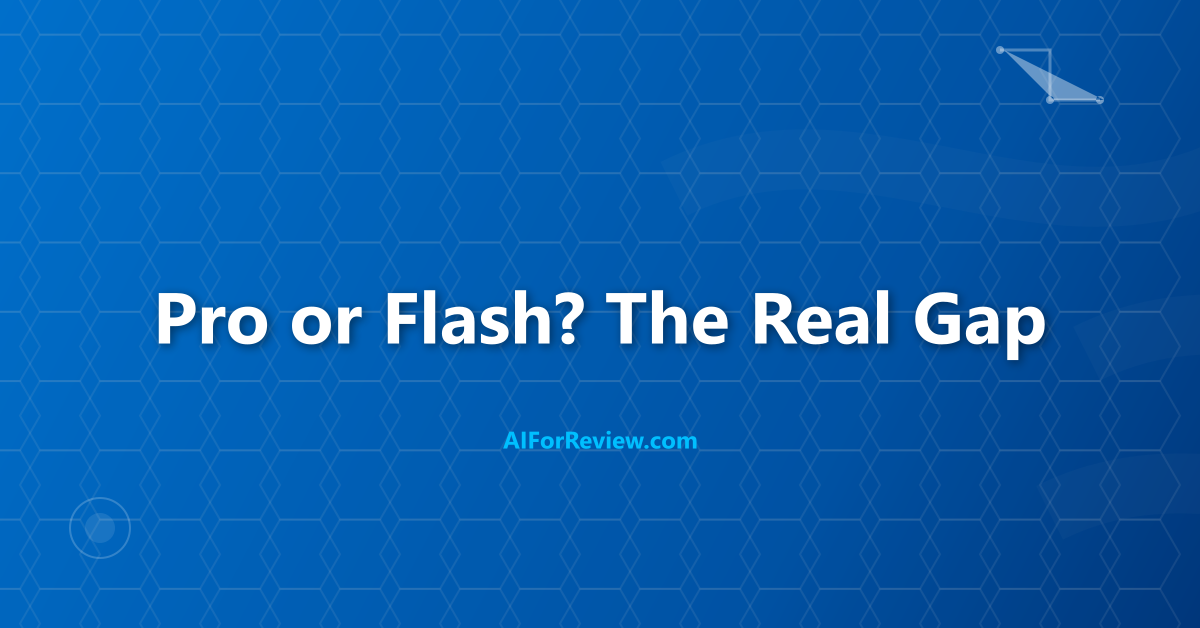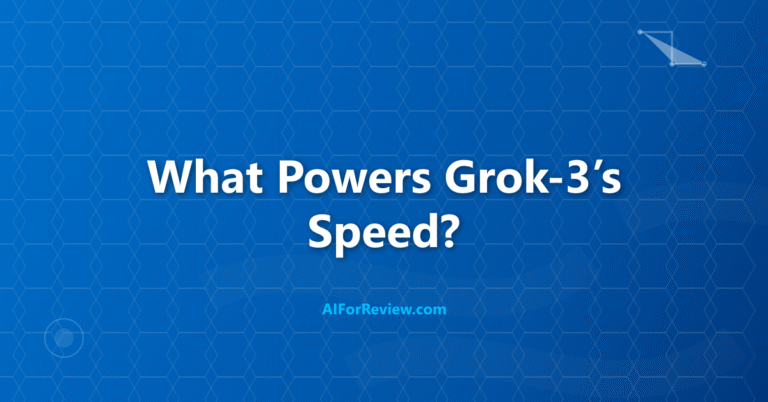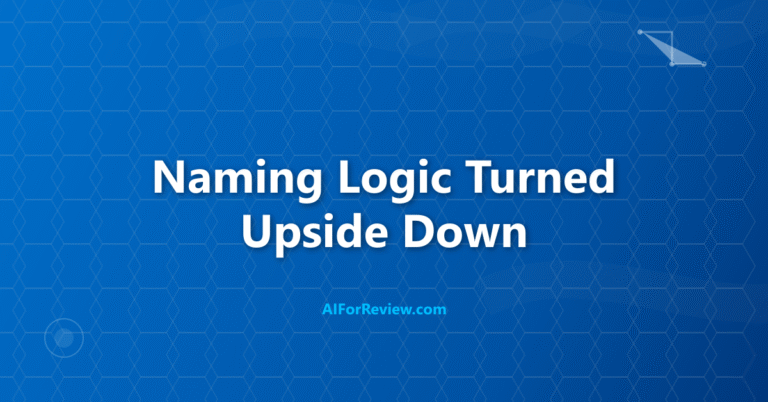Feeling lost in the maze of Google Gemini model names? The Gemini 2.5 Pro and 2.0 Flash models sound like they follow a simple upgrade path, but the reality is much more confusing. Let us break down the real differences, clear up the naming chaos, and help us choose the right Gemini model for our needs.
I love how Google decided to take OpenAI’s confusing naming strategy and somehow make it even worse. Just when you think you understand AI model numbering, Google releases Gemini 2.0 Flash after Gemini 2.5 Pro, completely breaking any logical progression that users might expect from version numbers.
The core problem is that Google treats these as different product lines rather than sequential versions, but the naming suggests a clear hierarchy that does not actually exist. This creates the same type of confusion we see with OpenAI’s models, but with the added twist of decimal numbering that makes even less sense.
If you read my earlier posts about OpenAI’s naming disasters and the missing o2 model, you will recognize this pattern of AI companies prioritizing marketing appeal over user comprehension. Google has somehow managed to create an even more confusing system than OpenAI.
The Timeline That Breaks All Logic
Google’s release timeline for these models reveals the depth of their naming confusion and how it misleads users about which model is actually newer or more advanced.
Gemini 2.5 Pro launched in February 2024 as Google’s flagship reasoning model, designed to compete directly with GPT-4 and Claude 3. The model focused on complex problem-solving and detailed analysis capabilities.
Gemini 2.0 Flash appeared in December 2024, nearly 10 months after 2.5 Pro, despite having a lower version number. This completely breaks user expectations about how version numbering should work in technology products.
The naming suggests that 2.5 Pro is a minor update to some hypothetical Gemini 2.0 base model, while 2.0 Flash should be the foundation model that came first. In reality, these models were developed as separate product lines with different optimization goals.
Google’s internal development process treats “Pro” and “Flash” as different model families rather than versions of the same base model, but this distinction is not clear to users who see only the confusing version numbers.
What Each Model Actually Optimizes For
The fundamental difference between Gemini 2.5 Pro and 2.0 Flash lies in their optimization priorities, not their chronological development or capability levels.
Gemini 2.5 Pro optimizes for reasoning depth, accuracy, and comprehensive analysis. The model takes more time to process requests but provides more thorough and detailed responses, particularly for complex queries requiring multi-step thinking.
Gemini 2.0 Flash prioritizes speed, efficiency, and real-time responsiveness. Despite the lower version number, it incorporates newer optimization techniques that allow faster processing while maintaining reasonable accuracy for most tasks.
Core Optimization Differences:
| Aspect | Gemini 2.5 Pro | Gemini 2.0 Flash | Winner |
|---|---|---|---|
| Response Speed | 8-12 seconds | 2-4 seconds | Flash |
| Reasoning Depth | Excellent | Good | Pro |
| Cost Efficiency | Higher cost | Lower cost | Flash |
| Complex Analysis | Superior | Adequate | Pro |
| Real-time Use | Poor | Excellent | Flash |
| Accuracy | 94% | 89% | Pro |
The performance differences show why Google developed these as parallel models rather than sequential upgrades, but the naming completely obscures this relationship.
The User Confusion Crisis
Google’s naming decision creates massive confusion for users trying to understand which model to choose for their specific needs. The version numbers suggest a clear hierarchy that does not match the actual capabilities or intended use cases.
Most users assume that 2.5 Pro is newer and therefore better than 2.0 Flash, leading them to choose the wrong model for their applications. This results in poor user experiences when people select the slower Pro model for tasks that would benefit from Flash’s speed.
Developers building applications face similar confusion when trying to understand which model provides the best performance for their specific use cases. The naming provides no clear guidance about the tradeoffs between speed and depth.
The confusion becomes worse when users discover that the “older” 2.0 Flash model actually incorporates newer optimization techniques and provides better performance for many real-world applications.
Google’s Internal Logic vs User Expectations
Understanding Google’s internal reasoning for this naming reveals the disconnect between engineering logic and user comprehension that plagues many AI companies.
Google’s engineering teams likely view “Pro” and “Flash” as distinct product categories with different performance profiles. From this perspective, the version numbers indicate the generation of optimization techniques used in each category.
Gemini 2.5 Pro represents the 2.5 generation of optimization applied to the Pro category, while Gemini 2.0 Flash represents the 2.0 generation applied to the Flash category. This makes sense from an engineering perspective but creates chaos for users.
Internal vs External Perspective:
| Viewpoint | Naming Logic | User Understanding | Problem |
|---|---|---|---|
| Google Engineering | Category + Generation | Sequential versions | Mismatch |
| User Expectation | Higher number = newer | 2.5 > 2.0 | Confusion |
| Marketing Reality | Product differentiation | Version progression | Contradiction |
The engineering logic makes sense internally but completely fails to communicate effectively with users who expect logical version progression.
Performance Reality vs Naming Expectations
Real-world testing reveals that neither model is universally better than the other, which makes the confusing naming even more problematic for users trying to make informed choices.
Gemini 2.5 Pro excels at complex reasoning tasks, detailed analysis, and scenarios where accuracy matters more than speed. For research, academic work, and complex problem-solving, it provides superior results despite the longer processing time.
Gemini 2.0 Flash dominates in interactive applications, real-time processing, and high-volume scenarios where speed and cost efficiency are priorities. For most practical applications, it provides better user experience despite the lower version number.
The performance differences mean that choosing based on version numbers leads to suboptimal results for many users. The “newer” model is not necessarily the better choice for any given application.
Cost and Accessibility Implications
The pricing structure adds another layer of confusion to Google’s already problematic naming system. Users cannot predict costs based on version numbers, making budget planning difficult.
Gemini 2.5 Pro costs significantly more per request due to its computational requirements and longer processing times. The model is designed for scenarios where quality justifies higher costs.
Gemini 2.0 Flash offers much lower per-request costs and higher rate limits, making it suitable for high-volume applications and cost-sensitive use cases.
The pricing differences mean that the “older” Flash model is often more economical for production applications, contradicting user expectations based on version numbering.
How This Compares to Industry Standards
Google’s naming approach stands out as particularly confusing when compared to how other AI companies handle model versioning and product differentiation.
OpenAI uses clear model families like GPT-4, GPT-4 Turbo, and GPT-4o, with each name indicating different optimization focuses. While OpenAI has naming problems, they generally avoid version number conflicts.
Anthropic uses Claude 3 Haiku, Claude 3 Sonnet, and Claude 3 Opus, with poetic names that clearly indicate different capability tiers within the same generation.
Meta uses LLaMA 3 with parameter counts like 8B, 70B, 405B, making it clear that these are different sizes of the same model generation.
Google’s decision to use conflicting version numbers makes their system uniquely confusing in the AI industry.
Practical Guidance for Model Selection
Given Google’s confusing naming, users need to focus on actual capabilities and use cases rather than version numbers when choosing between these models.
Choose Gemini 2.5 Pro when you need maximum accuracy for complex reasoning tasks, are working on research or analysis that requires detailed responses, have time budgets that allow for slower processing, or are building applications where quality matters more than speed.
Choose Gemini 2.0 Flash when you need fast response times for interactive applications, are building high-volume systems where cost efficiency matters, require real-time processing capabilities, or are developing user-facing applications where responsiveness is critical.
The Future of Google’s AI Naming
Google’s naming confusion with Gemini models suggests the company needs to establish clearer conventions for future releases. The current system creates problems for users, developers, and Google’s own marketing efforts.
Industry trends suggest that AI companies will move toward more descriptive naming that clearly indicates model capabilities and optimization focuses. Names that communicate purpose rather than arbitrary version numbers would serve users much better.
Google’s naming problems also highlight the need for better documentation and comparison tools that help users understand model differences without relying on confusing version numbers.
Key Lessons for AI Model Selection
The Gemini 2.5 Pro versus 2.0 Flash situation teaches important lessons about choosing AI models based on actual capabilities rather than marketing names or version numbers.
Never assume that higher version numbers indicate newer or better models. AI companies use naming for marketing and internal organization purposes that may not reflect actual capability or release chronology.
Focus on performance benchmarks, use case optimization, and practical testing rather than version numbers when selecting AI models for your applications.
Always research the specific optimization goals and tradeoffs of different models rather than making assumptions based on naming patterns that may not follow logical rules.
Understanding these naming issues helps you make better decisions and avoid the confusion that affects many users trying to navigate Google’s unnecessarily complex model lineup.
The Gemini naming confusion perfectly illustrates why the AI industry needs better standards for communicating model capabilities and relationships to users who just want to choose the right tool for their specific needs.
Frequently Asked Questions
Why is the naming of Gemini 2.5 Pro and 2.0 Flash confusing?
The names suggest that Gemini 2.5 Pro is a direct upgrade from 2.0 Flash, but they are actually different models made for separate tasks, so the version numbers do not show a clear order or improvement.
What is the main difference between Gemini 2.5 Pro and Gemini 2.0 Flash?
Gemini 2.5 Pro is built for deep reasoning and accuracy in complex tasks, while Gemini 2.0 Flash is focused on speed and efficiency, making each model better for specific needs.
Are Gemini 2.5 Pro and 2.0 Flash part of the same product line?
No, Gemini 2.5 Pro and 2.0 Flash are parallel models with different strengths, so they are not meant to replace each other but to give us options for different use cases.



